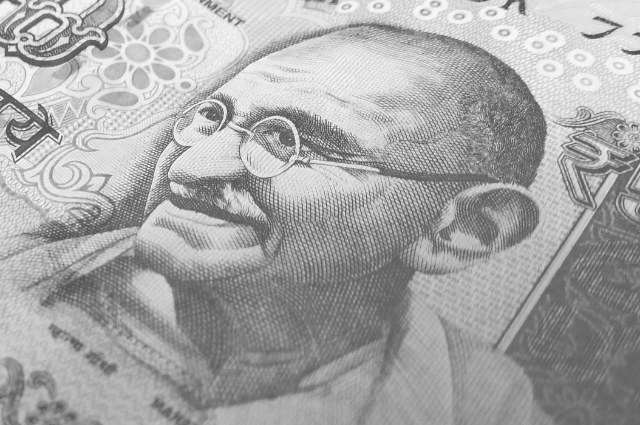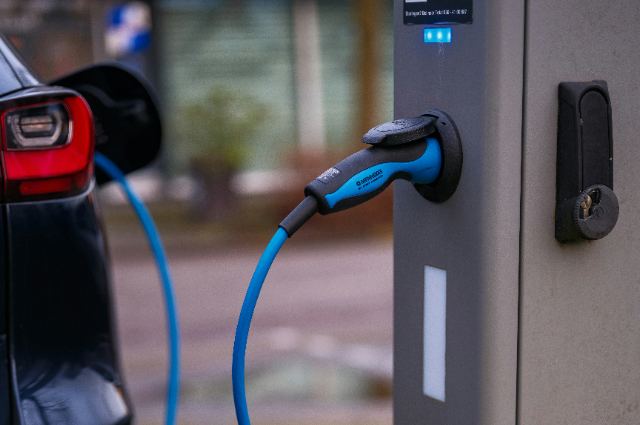
Introduction
India, with over 1.4 billion people, is poised to significantly impact the global economy soon. As the world’s fifth-largest economy by nominal GDP and one of the fastest-growing major economies, India is making a bold statement on the international stage. This dynamic country, with its rich history, diverse culture, and youthful population, is harnessing the power of technology, innovation, and entrepreneurship to carve out a significant role in the global economic landscape by 2025.
From Silicon Valley to the bustling streets of Bengaluru, India’s influence on the tech world is undeniable. The country has become a hub for tech giants, start-ups, and digital solutions, driving innovation across borders. With a strong focus on digitalization, infrastructure development, and a growing middle class, India’s potential as an economic powerhouse is more evident than ever. However, while the nation has made impressive strides, it faces a multitude of challenges—ranging from inequality to environmental concerns—that must be addressed if it is to sustain its growth and ensure long-term prosperity.
In the realm of manufacturing, renewable energy, and global trade, India’s contributions are poised to grow exponentially. The country’s economic policies and initiatives are creating an environment that encourages foreign investment and nurtures domestic innovation. But to realize its vision of becoming a global economic leader by 2025, India will need to overcome obstacles, embrace reform, and work towards a more inclusive and sustainable model of development. The next decade will be critical in shaping India’s future and determining its place in the evolving global economy.
Positive Contributions
India’s contributions to the global economy in 2025 are manifold:
1. Growing GDP and Economic Stability:
India's robust economic growth and stability underscore its position as one of the world's most dynamic economies, with a projected GDP growth rate of 6.5% in 2025. This remarkable pace places India ahead of many developed and developing nations, highlighting its potential as a global economic powerhouse. Key economic reforms, such as the implementation of the Goods and Services Tax (GST) and the simplification of business regulations, have fostered a business-friendly environment that attracts both domestic and foreign investments. These reforms have streamlined tax structures, reduced compliance burdens, and boosted investor confidence, laying the foundation for sustainable economic growth. Furthermore, India's emphasis on innovation and entrepreneurship is driving its economic resilience, ensuring long-term stability even amid global uncertainties. As the country continues to strengthen its economic framework, it is poised to achieve greater prosperity and cement its role as a leader in the global economy.
2. Technology and Service Hub:
India has established itself as a global powerhouse in IT and software services, playing a; role in shaping the digital economy. Tech hubs like Bengaluru, Hyderabad, and Pune are home to some of the world’s largest technology companies and innovative start-ups. These cities serve as innovation centers, driving advancements in cutting-edge domains such as artificial intelligence (AI), cybersecurity, and cloud computing.
With a robust ecosystem that includes a vast talent pool of over 5 million IT professionals, India continues to be the preferred destination for outsourcing, software development, and tech-driven solutions. Initiatives like Start-up India and government-backed programs for innovation have fueled the growth of a thriving start-up culture, making India the third-largest start-up ecosystem globally.
India’s contributions extend beyond traditional IT services. Breakthroughs in AI-powered solutions, blockchain technology, and software-as-a-service (SaaS) platforms have solidified its position as a leader in digital transformation. For instance, companies like Infosys, TCS, and Wipro, along with unicorn start-ups like BYJU and Zomato, showcase India's ability to deliver world-class technology and services.
As the country continues to harness its potential, the future of India’s tech ecosystem looks promising. Investments in emerging technologies, a focus on upskilling the workforce, and a growing emphasis on innovation are positioning India to lead the global digital revolution in the coming years
3. Manufacturing and Exports:
India is experiencing a significant transformation in its manufacturing sector, driven by initiatives like “Make in India” and the Production Linked Incentive (PLI) schemes. These policies aim to bolster domestic manufacturing, attract foreign investment, and establish India as a global manufacturing hub.
The country is becoming increasingly competitive in key sectors such as automobiles, electronics, textiles, and pharmaceuticals. For instance, India is now one of the largest producers of generic medicines and is rapidly advancing in the production of electric vehicles and consumer electronics. These advancements are boosting exports and making Indian products more competitive in international markets.
In response to global disruptions in supply chains, India is emerging as a reliable alternative for manufacturing and sourcing. The focus on reducing dependence on imports while strengthening domestic production is enabling India to cater to the growing demands of global trade. Moreover, the rise of industrial corridors, such as the Delhi-Mumbai Industrial Corridor (DMIC), and the development of state-of-the-art infrastructure are enhancing logistics efficiency and connectivity, further supporting export growth.
By leveraging its skilled workforce, policy reforms, and technological advancements, India is positioning itself as a critical player in the global economy. This expansion in manufacturing and exports not only boosts economic growth but also provides employment opportunities, strengthening the foundation for sustainable development.
4. Renewable Energy Leadership:
India is making remarkable strides in renewable energy, particularly in solar power, positioning itself as a global leader in the clean energy transition. The country has rapidly scaled up its renewable energy capacity, with ambitious targets such as achieving 500 GW of non-fossil fuel capacity by 2030. This progress has propelled India to become one of the top producers of solar energy worldwide, underscoring its commitment to a sustainable future.
Flagship programs like the National Solar Mission and innovative projects, such as large-scale solar parks and floating solar plants, are driving this transformation. Additionally, India’s leadership in international initiatives like the International Solar Alliance (ISA) highlights its proactive role in promoting solar energy adoption across the globe.

Photo by Haberdoedas on Unsplash
As the world pivots toward greener practices, India’s renewable energy efforts are setting a benchmark for other nations. This transition is not just about meeting domestic sustainability goals but also about reducing carbon emissions, fostering energy security, and creating green jobs. By investing in wind, hydropower, and emerging technologies like green hydrogen, India is diversifying its clean energy portfolio to ensure long-term environmental and economic benefits.
India’s bold vision and decisive actions in renewable energy solidify its position as a key player in combating climate change and steering the world toward a more sustainable and equitable energy future.
5. Strategic Trade Partnerships:
India is actively forging stronger trade relationships across the globe, recognizing the importance of collaboration in an interconnected world. The country is enhancing its ties with key regions in Asia, Europe, and the Americas, positioning itself as a central player in global trade networks. India’s growing involvement in international trade is reshaping its role from a regional player to a global economic force.
A cornerstone of India’s strategic trade expansion is its participation in multilateral agreements like the Regional Comprehensive Economic Partnership (RCEP) and the Comprehensive Economic Partnership Agreement (CEPA). These agreements are designed to reduce trade barriers, enhance market access, and foster deeper economic integration between India and other global economies. By negotiating these deals, India is enhancing its influence in international markets and securing favorable terms for its exports, from agriculture to technology.
In addition to multilateral agreements, India is also focusing on strengthening bilateral trade partnerships, particularly with major economies like the United States, the European Union, Japan, and ASEAN countries. The country is diversifying its exports and becoming an essential part of global supply chains, offering a wide range of competitive products, from pharmaceuticals to advanced machinery.
India’s strategic trade partnerships are not just about increasing exports—they also bring in valuable foreign direct investment (FDI), which fuels innovation, job creation, and infrastructure development. By positioning itself as a reliable partner in global trade, India is cementing its role as a critical hub for commerce, furthering economic integration with the rest of the world while expanding opportunities for its businesses on the global stage.
Challenges and Negative Impacts
While India has made significant strides in various sectors, there are underlying issues that require attention. Despite its achievements, India faces several challenges that could hinder its global economic role:
1. Infrastructure Bottlenecks:
Even though India has made progress in modernizing its infrastructure, there are still significant gaps, particularly in rural areas. Many regions lack the roads, connectivity, and basic services that are essential for economic development. While cities are growing rapidly, rural areas often find themselves left behind, unable to fully participate in the country’s overall growth. This uneven development creates obstacles that limit the country’s true economic potential.
2. Environmental Concerns:
India’s fast-paced industrialization and urban growth have unfortunately come at a cost to the environment. Pollution, resource depletion, and deforestation are just some of the challenges the country faces. As the economy grows, balancing this with environmental sustainability is becoming increasingly important. If India doesn’t take action to reduce its environmental impact, it risks facing long-term consequences that could undermine the progress made so far.
3. Income Inequality and Unemployment:
The divide between urban and rural incomes is a persistent issue. While cities continue to thrive, many rural areas are still struggling with poverty and a lack of opportunities. This disparity in wealth creates inequality that can affect social stability. Additionally, unemployment, especially among the youth, is another challenge. With so many young people entering the workforce, the country needs to create more job opportunities to avoid growing frustration and disillusionment among its population.

4. Dependence on Imports:
India’s reliance on imports for key resources, like crude oil and advanced technologies, leaves the economy vulnerable to external forces. Global price fluctuations and geopolitical instability can disrupt supply chains, causing economic instability. Although India is working to reduce this dependence through initiatives like “Make in India,” the country still faces challenges in becoming more self-reliant, especially in areas that require advanced technology and expertise.
Benefits to the Indian People
India’s growing role in the global economy has numerous benefits for its citizens:
1. Job Creation:
India is experiencing a significant surge in job opportunities, especially in urban centers, driven by the expansion of industries and a steady inflow of foreign investments. The rapid growth of start-ups, coupled with advancements in sectors like technology, manufacturing, and services, has opened new avenues for employment. For instance, Bengaluru, often referred to as the "Silicon Valley of India," has become a hub for IT jobs, while cities like Pune and Chennai are emerging as centers for manufacturing and automobile industries. This job growth is particularly vital given India’s young and dynamic workforce, with millions entering the labor market every year. By meeting the increasing demand for skilled labor in urban areas, these developments are not only reducing unemployment but also fueling the country's economic momentum and urbanization.
2. Global Market Access:
Indian businesses and entrepreneurs are leveraging unprecedented opportunities to expand into international markets. Strategic trade agreements like the Regional Comprehensive Economic Partnership (RCEP) and the Comprehensive Economic Partnership Agreement (CEPA) are enhancing India's global trade footprint. Improved logistics infrastructure, such as the development of dedicated freight corridors and enhanced port facilities, has significantly boosted the efficiency of Indian exports. Additionally, digital platforms are empowering small and medium enterprises (SMEs) to reach global consumers, with sectors like e-commerce and IT-enabled services leading the charge. For instance, Indian software firms like TCS and Infosys continue to dominate global markets, while start-ups like BYJU and Zomato are making waves internationally. This increased access to global markets not only fosters innovation but also encourages Indian companies to adopt cutting-edge technologies and collaborative business models, strengthening India's position as a key player in the global economy.
3. Enhanced Quality of Life:
Investments in infrastructure are playing a transformative role in improving the quality of life for millions across India. Initiatives like the Smart Cities Mission are revolutionizing urban living by integrating technology into urban planning to create more sustainable and efficient cities. Enhanced transportation networks, such as metro rail expansions in cities like Delhi, Bengaluru, and Mumbai, are reducing commute times and easing congestion. Better roads and highways, including projects like the Bharatmala Pariyojana, are improving connectivity between rural and urban areas, facilitating access to markets, jobs, and services. Furthermore, improved infrastructure is extending essential services like healthcare and education to underserved regions. For example, the Ayushman Bharat scheme, supported by new health infrastructure, is providing affordable healthcare to millions. As these projects continue to grow, they are not only improving convenience and accessibility but also fostering inclusivity by bridging the urban-rural divide, ultimately lifting living standards across the nation.
4. Technological Advancements:
India's rapid digital transformation is revolutionizing its economy and society, extending its impact even to the remotest corners of the country. Initiatives like Digital India and the JAM (Jan Dhan-Aadhaar-Mobile) trinity have empowered millions by providing access to essential services, promoting digital banking, and connecting citizens with government schemes. With over 1 billion internet users anticipated by 2025, India is emerging as a global leader in digital connectivity. Technological advancements are bridging socio-economic divides by enabling rural entrepreneurs to access global markets through e-commerce platforms and students in underserved regions to benefit from e-learning initiatives like SWAYAM. Telemedicine services are improving healthcare delivery in remote areas, while mobile banking solutions are fostering financial inclusion. As India continues to advance in cutting-edge fields like artificial intelligence, blockchain, and the Internet of Things (IoT), its digital ecosystem is not only driving economic growth but also ensuring inclusive development. These strides are positioning the country to lead the next wave of technological innovation, creating a future where progress benefits every corner of the nation.
Conclusion
India’s role in the global economy in 2025 is set to be both exciting and transformative. The country has made incredible progress over the past few years, becoming one of the fastest-growing economies in the world. However, as India continues to rise, it faces some important challenges that need to be addressed—like income inequality, environmental sustainability, and infrastructure development—if it’s to maintain this upward momentum.
For India to keep growing, it’s crucial that the benefits of progress reach everyone. There’s a wide gap between urban and rural areas, and between rich and poor, which can create social tensions. By making sure all Indians have access to education, good jobs, and better living standards, India can build a more inclusive and resilient economy. At the same time, the country’s push for sustainable development is more important than ever. As global environmental concerns grow, India has the opportunity to lead in renewable energy and green technologies, helping both its people and the planet.
Infrastructure development is another key area. While cities are rapidly modernizing, many rural areas still lack basic infrastructure, such as roads, hospitals, and education facilities. Bridging this gap will make a huge difference, unlocking opportunities for millions of people and allowing India to maximize its economic potential.
India’s future is bright, but to truly thrive on the global stage, the country needs to find a balance between ambition and responsibility. By addressing these challenges head-on and leveraging its strengths in technology, manufacturing, and trade, India can continue to grow in a way that benefits not just its economy, but its people as well. If it succeeds, India will not only strengthen its global position but also ensure a better, more prosperous future for generations to come.
